Springfield has enthusiastically embraced its role as the hometown of Abraham Lincoln. Lincoln arrived here in 1837 as a 28-year-old man whose earthly possessions fit into two saddlebags, but who had recently become a member of the Illinois State Bar after teaching himself the law. He left Springfield in 1861 as President-elect of the United States. In between he built a law practice, a political career, and a life, marrying Mary Todd in 1842 and fathering four sons. There are images and statues of him everywhere, and many places in the city have been restored to their condition as of the time Lincoln lived here. I am a huge Lincoln fangirl, so this overabundance of Lincoln-related material is just fine with me.
Lincoln Home
The highlight of the Lincoln experience is the Lincoln Home National Historic Site which preserves the home where Abraham and Mary lived from 1844 until they departed for Washington. It was donated to the State of Illinois by their only surviving son, Robert, on the condition that it be maintained and free for the public to visit. It became a national historic site in 1971. The home can be visited — for free of course — in ranger-led tours of about a dozen people with timed tickets. Since Lincoln became an immediate martyr upon his assassination, the house was generally well preserved through the years. The meticulous restoration work by the National Park Service relies on sketches made in 1860 and published in an eastern newspaper to show curious readers what life what like on the wild western frontier from which the new president originated. Thanks to those sketches, everything down to the furniture and the knick-knacks is situated as it was during Lincoln’s final residency. The accurate wallpaper and carpet reinforced that I really do not share 19th century decorative tastes.
We previously visited two other former Lincoln homes: the very lame Lincoln “birthplace” in Kentucky and the slightly less lame Lincoln Boyhood Home in Indiana. This site in Springfield is clearly the best of the three, but those other sites do provide some important context. The contrast between the tiny log cabins where Lincoln grew up and this comfortable home illustrates how successful this self-made man had become, even before being elected president. The grit, determination, and self-confidence that brought him this success despite having, in total, fewer than 12 months of formal education obviously served him well during the extremely challenging period of the Civil War.
Our favorite thing about the Lincoln Home is that the NPS very smartly purchased all the property within a block in each direction and has either restored those properties to their 1860 condition or just torn down modern structures. Several of those other homes contain complementary exhibits, but simply having the historic district creates a pleasantly antique ambiance. One of the exhibit homes focuses on the Lincoln family’s involvement in the Springfield community, with details about their church attendance, social events, and interactions with neighbors. This exhibit included scale models of the Lincoln home in three different iterations, as the family expanded and Lincoln’s growing prosperity allowed for renovations and additions. A different home has exhibits that illustrate the NPS process for restoring historic sites, from the initial research phases through the actual construction work.
Old State Capitol and Lincoln Tomb
When Illinois began building a grand new Capitol in 1868, the prior building was sold to the county and became the county courthouse and administrative building. Today, however, it has been restored to a condition that would be familiar to Lincoln, who spent time in this building serving as a state representative for eight years, arguing cases before the state supreme court, delivering his “House Divided” speech, and debating Stephen Douglas in the 1858 Senate race.
Lincoln also lay in state in the House chamber at the Old Capitol after his assassination, before being interred at Oak Ridge Cemetery. His remains were initially stored in a temporary vault, until completion of an extremely large and elaborate monument and tomb complex made possible by donations from people across the country. The tomb contains the remains of Abraham, Mary, and their three sons who did not survive to adulthood. Robert is buried at Arlington. The tomb includes bronze copies of several famous sculptures of Lincoln. The entry gates to the cemetery are surrounded by Lincoln souvenir shops, which is predictable if a bit tacky.
New State Capitol
The Capitol building that was begun in 1868 took two decades to complete, and upon walking inside it’s immediately obvious why it took so long. This may be the most elaborate public building we have ever seen. The floors, walls, and staircases are richly decorated with multi-hued marble. The ceilings feature ornate three dimensional plaster designs. Staircases have balustrades made of either marble or elegant wrought iron. Lighting comes from grand crystal chandeliers and intricate stained glass pieces. There are giant murals depicting events in Illinois history. Gilt is everywhere. No surface is left undecorated — and there is a lot of surface area, because this is the tallest domed capitol in the country, 74 feet taller than the U.S. Capitol. I’ll let the pictures try to tell the story, though they fail to capture just how huge and opulent it all is.
At the end of our informative free tour, I asked our tour guide about why the new capitol was so much more elaborate than the prior iteration. After a few tepid comments about Illinois being a growing state at the time, he got to the heart of the matter. This was the sixth building to serve as the capitol since the state’s formation in 1818, the second in Springfield with the other four located in other cities. Obviously aware of the civic importance of being the state capital, the City of Springfield paid for half the cost of the Capitol to ensure the seat of government wouldn’t move away. Mission accomplished: I can’t imagine the elected leaders of Illinois not wanting to work in such a beautiful and awe-inspiring building.
Dana-Thomas House
Springfield is also home to another important (though far less grand) piece of architectural work. Designed by Frank Lloyd Wright in 1902, the Dana-Thomas House contains of the most complete collections of any Wright-designed property and is now a state historic site. The home is an outstanding example of the Prairie style of architecture, with its strong horizontal orientation and use of natural motifs like butterflies and sumac leaves.
Wright typically designed both his structures and their contents, and the 12,000 square feet of the home are packed with custom designed furniture, stunning art glass, and surprisingly modern touches. New-fangled electric lights were used above art glass ceilings to create a stunning effect of skylights. Wright was also a pioneer of the “open concept” floor plan, preferring to use a few stairs or a change in ceiling height to demarcate different areas of living space instead of walls. The house is a drastic departure from the Victorian style that had been prevalent in this well-to-do neighborhood, reflecting the unconventional and forward-thinking character of the owner. Susan Lawrence Dana was an heiress but also an activist. She was heavily involved in causes ranging from women’s suffrage to racial equality, and the home even includes purpose-built conference space to accommodate meetings of the many organizations she was involved with. Unfortunately photos are not allowed inside, but we highly recommend the free guided tour.
Seen Around Springfield
The business district around the Old Capitol has a healthy stock of historic buildings, including the commercial space where Lincoln and his law partner Herndon set up shop once he progressed from “junior partner” to “senior partner.” One thing I learned here is that local 19th law firms certainly, definitely, absolutely could not have more than two lawyers. Lincoln was actually kicked out of a practice when the senior guy wanted to bring his own son onboard! Things have obviously changed in the practice of law. A number of lovely historic churches cut striking figures on corners in the downtown area. There are even a few non-Lincoln attractions, mostly relating to the path of Route 66 through the heart of Springfield.
The beautifully restored Union Station fronts a serene public square with at least two separate Lincoln statues and a memorial to a 1908 episode of racial violence involving a lynch mob in search of victims and widespread destruction of Black-owned businesses and property. The two pieces of the memorial both resemble the chimneys that were left standing after the state militia restored order, and are covered in images of both intolerance and redemption. At the time of the riot, the fact that racial violence was happening in Lincoln’s hometown really clarified the scale of the problem (it was everywhere) and led to the formation of the NAACP.
Overall, downtown Springfield is highly walkable and jam-packed with interesting history and architecture. It’s a fine example of how slow travel allows for engaging stops in less famous destinations.
Where We Stayed
We originally planned to stay at the campground at the state fairgrounds. But those sites are first come, first serve so we had no assurance that we could get a spot with shade, a critical issue in the ongoing heatwave. Instead we followed the advice of friends Eric and Laurel and booked a spot at Sangchris Lake State Park about 20 miles southeast of downtown. This state park has two campgrounds. The lakeside Hickory Point campground was very popular with weekend visitors during our stay. Meanwhile, we had a whole stretch of the more heavily wooded Deer Run campground to ourselves.
Luckily the heat wave abated and by the end of our stay we could turn off the A/C and open the windows. Hooray! And on our last day our friends Eric and Laurel pulled into town and we shared a delightfully non-sweaty happy hour. Double hooray!
Next: We finish our mad dash north by heading to Madison, Wisconsin and settling in for a longer stay.
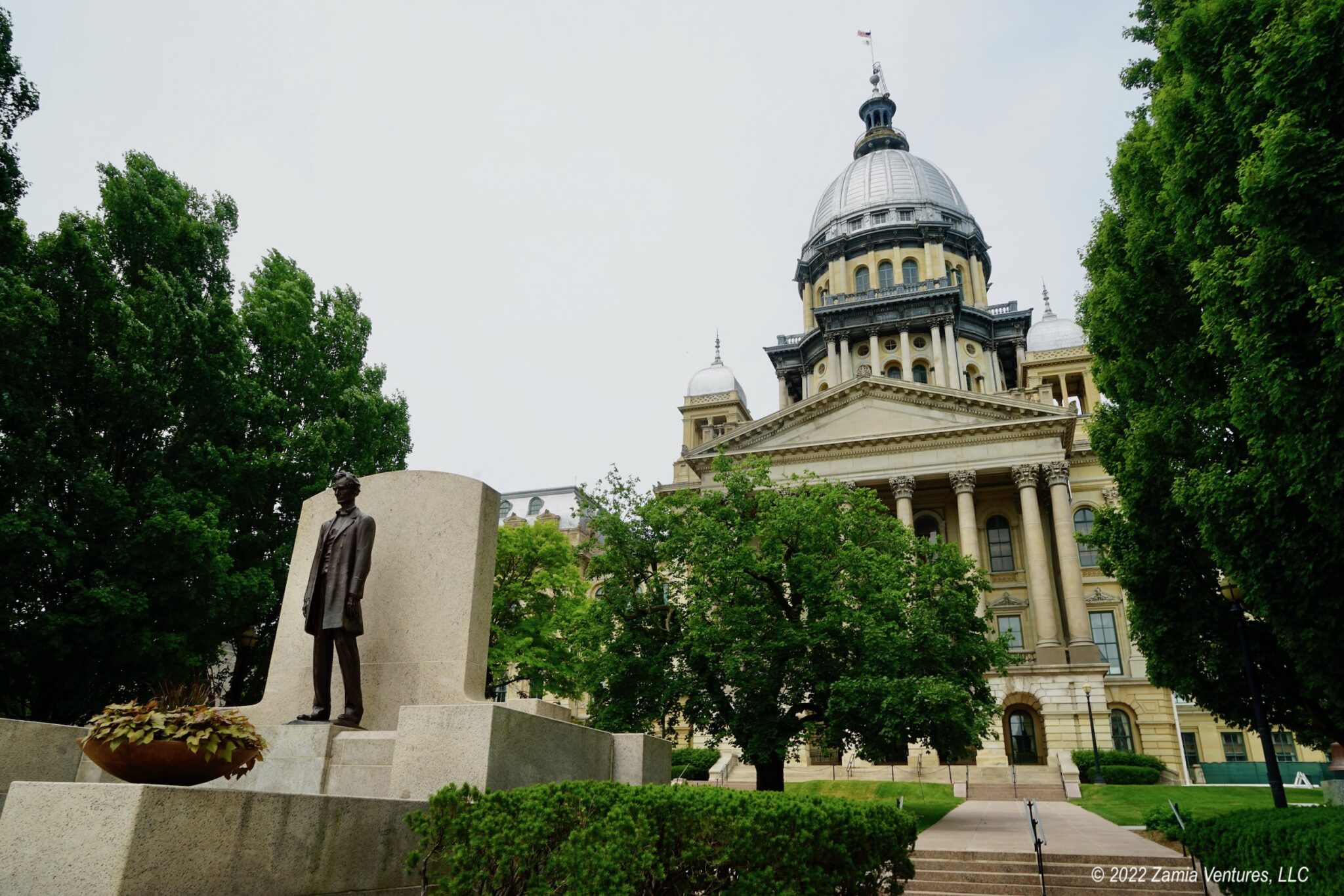
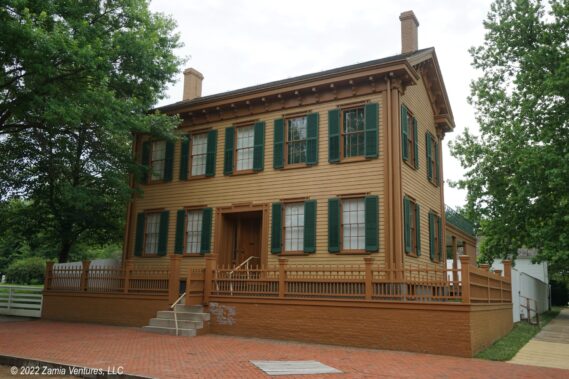
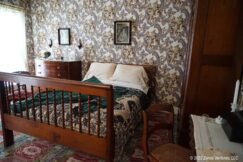
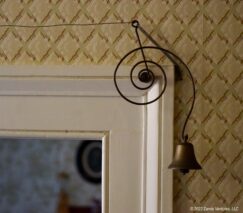
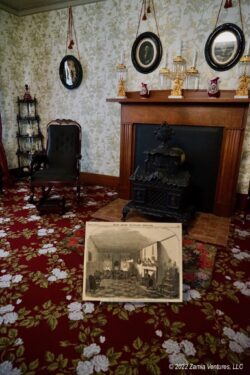
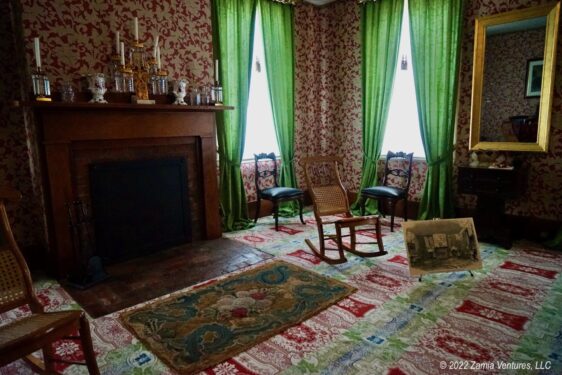
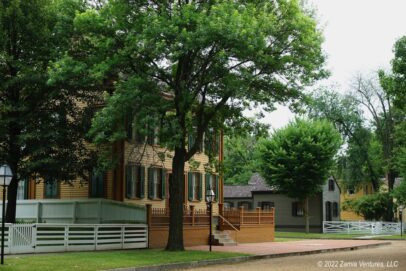
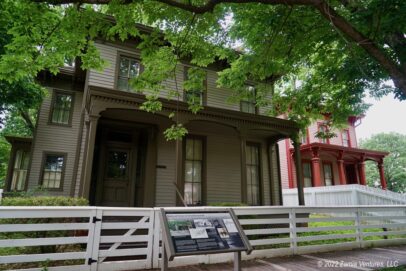
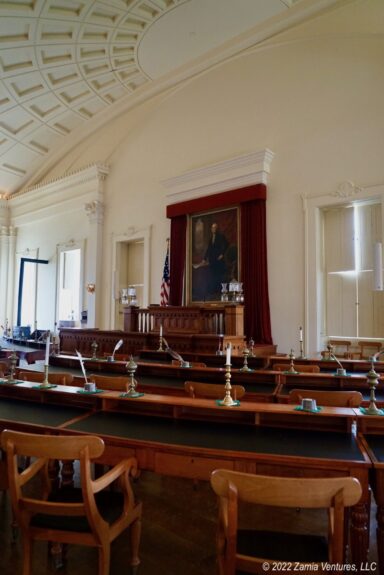
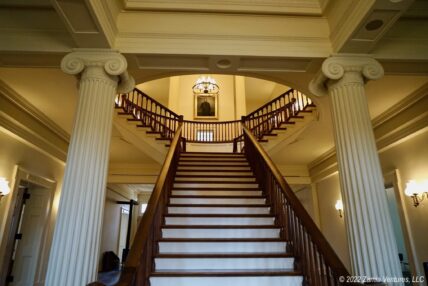
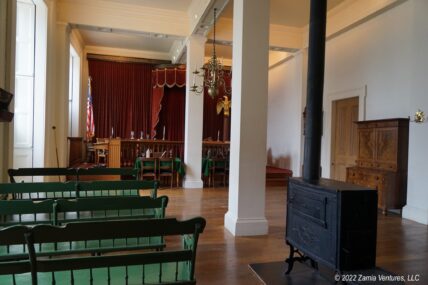
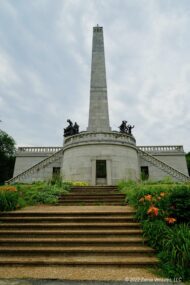
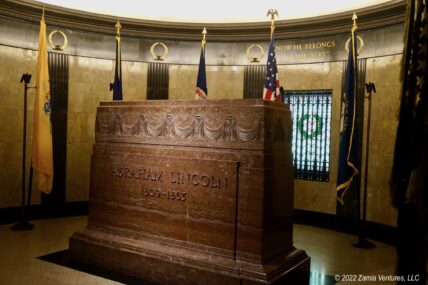
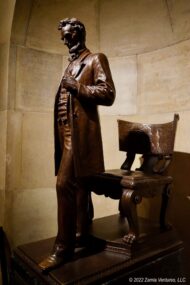
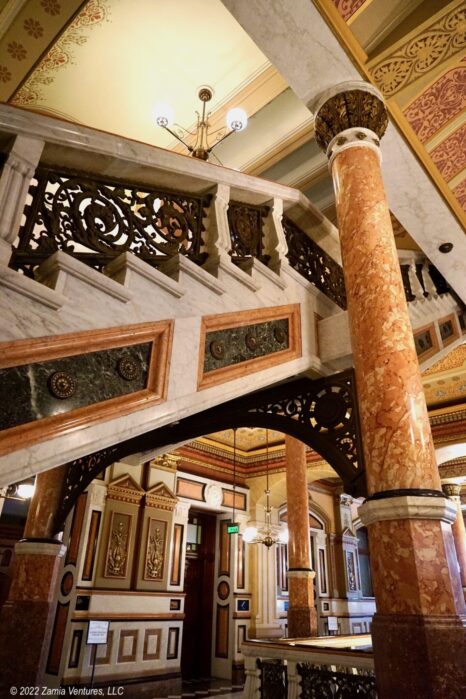
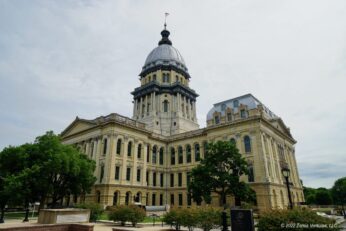
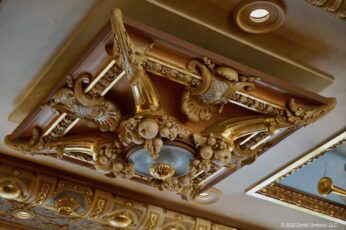
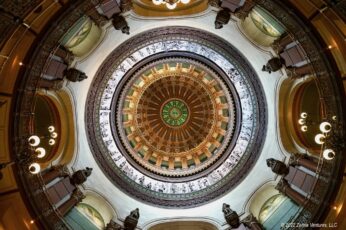
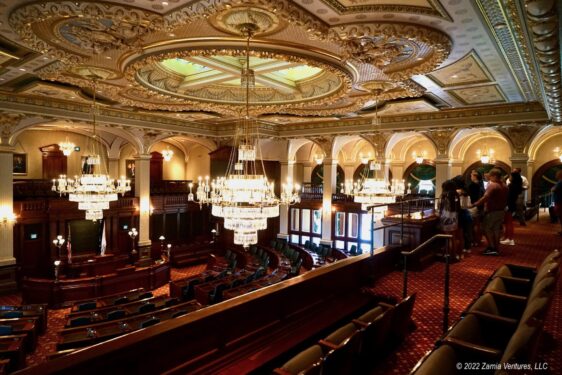
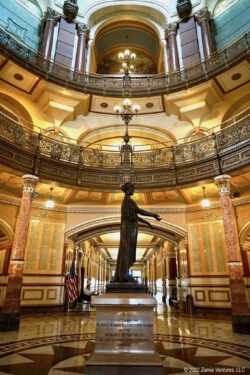
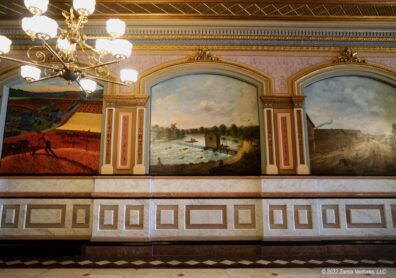
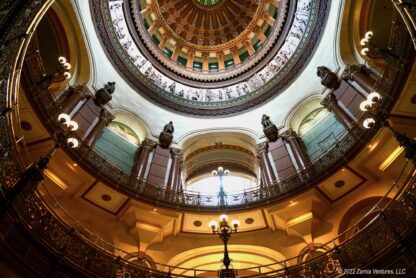
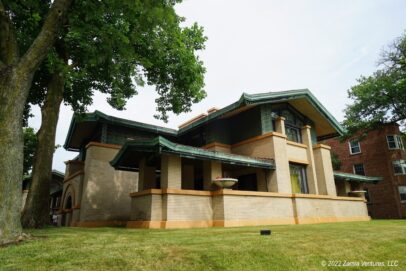
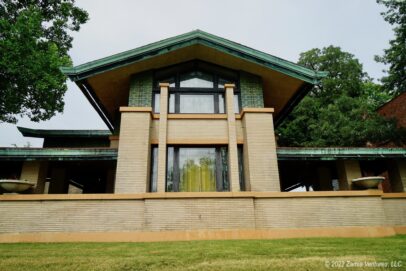
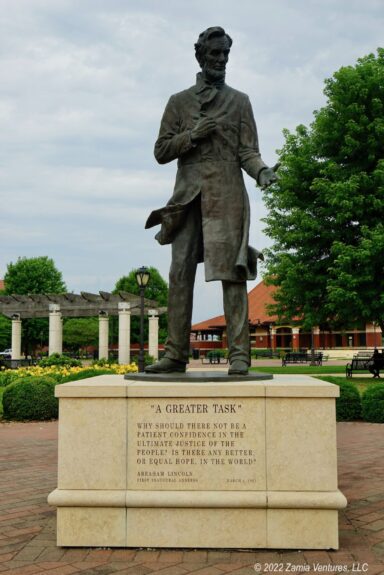
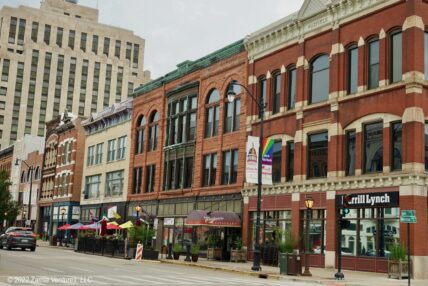
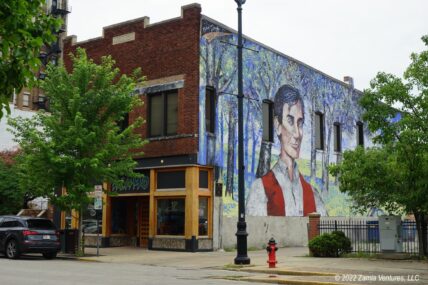
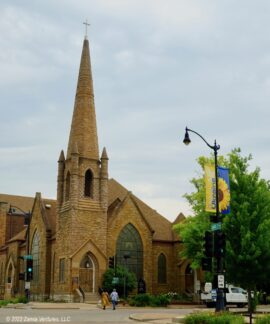
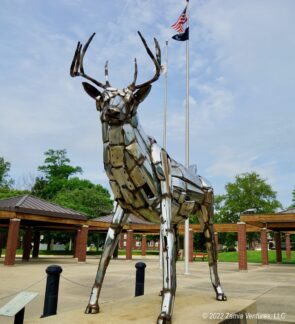
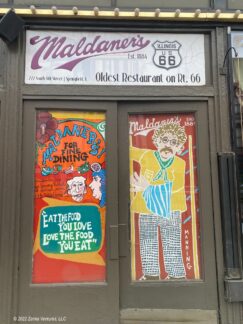
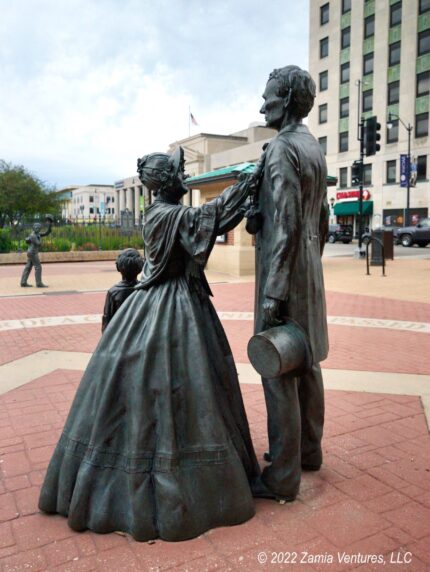
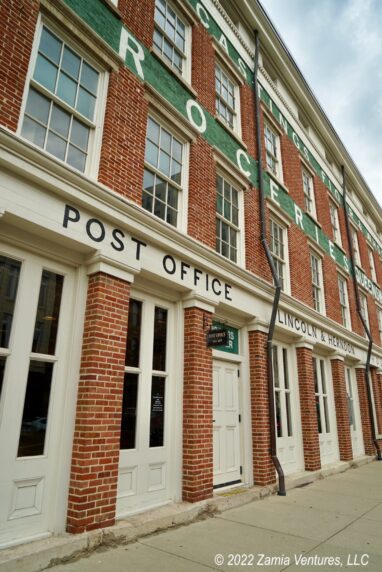
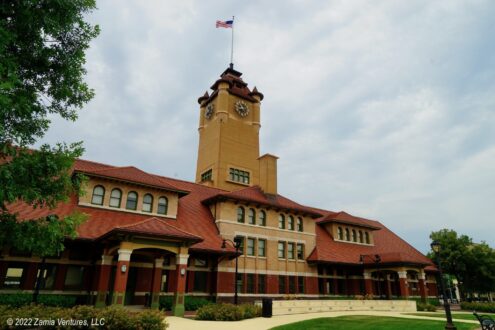
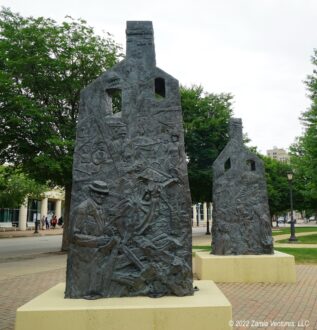
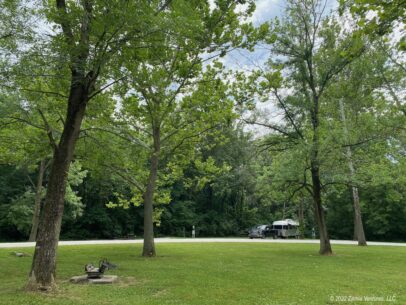
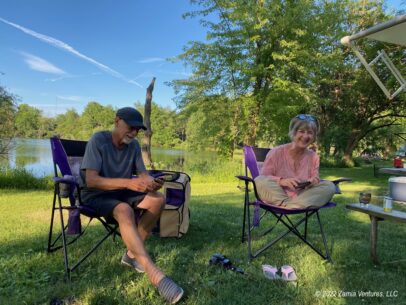
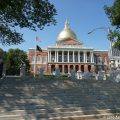

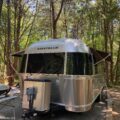

We just got back to camp after our immersion in the “Lincoln-palooza,” LOL!! Thanks to your excellent advice we saw the best of what Springfield has to offer. And you’re right, the new state capitol is stunning! I think it’s the most beautiful we’ve seen. Tomorrow we do the Dana-Thomas house.
I’ve decided that I really would like it if you would just be our scout for all of our travels. You guys like all of the same things that we do, you make great choices, and you provide interesting commentary so that I’m prepared for where we’re visiting. And you always dig up some facts that I haven’t come across! 😀 Meeting up here and there in our respective journeys has been a blast. We’re still laughing about trying to find a giant hamster ball for Magnolia so that she can roll freely around the campsite. See you in Madison!! 😻
I’m so glad you enjoyed the places we recommended! I am always a bit nervous that recommended spots may turn out to be disappointing. We are super-nerds, and I guess you guys are, too.
I appreciate your subtle re-framing of our relationship. We thought you were “stalking” us, but you think we’re “scouting” for you. Interesting. We can hash this out the next time we see you…. and the time after that. We will also keep our eyes open for Magnolia’s new mode of transportation.
I know you didn’t take a shine to the Lincoln-era interior decorating, but I am thrilled to see it highlighted just in time for our new home. The way those green sheers bring out the color in the carpet! Our master bedroom is made!
It’s a good thing you like your stalkers. Y’all should do some guest-blogging or something tandem. You get architecture and flowers, they get food and birds. It’s a good idea, admit it.
I’m pleased to hear that someone got some value out of the photos of 19th century interiors. They make my eyes hurt.
The guest post idea is an interesting one. But from what I hear from management over at Raven & Chickadee, there are plans to just link to my posts if the blog gets too far behind. Going to the same places is handy like that. 🙂
So, what was the reason for the limitation on legal partnerships? Did anyone explain? Can you imagine what Lincoln and company would say if they saw the average biglaw firm today? Actually, can you imagine what Lincoln would say about anything that’s going on today? Probably something along the lines of: “Are you f’in kidding me with this? Still????”
But I digress.
That capitol building is remarkable. It’s as if the U.S. Capitol and the Library of Congress had a baby, but that baby spent a lot of time with “Aunt Capitol of Iowa.” I’m not sure where I’m going with this, but the important thing is, it’s really impressive! And I, too, appreciate when a town maintains an entire area around a historic site. Keep the trinket stores and modern buildings on the perimeter and respect the space.
I never discovered the reason why no law firms had more than two lawyers, but I would love to know what happened when someone got the bright idea to have a firm with — gasp — three lawyers! Were they shunned by the rest of the bar??? 19th century lawyers would be shocked by law firms today. And they would also be shocked by today’s practice specialization, as well as the sheer volume of laws and cases. Lincoln had a law library at his home, and it was a three foot wide cabinet with three shelves!
The new capitol really is quite unbelievable. You are very perceptive to notice the similarities to the Iowa Capitol — the same architect designed both buildings. He obviously had a memorable style.